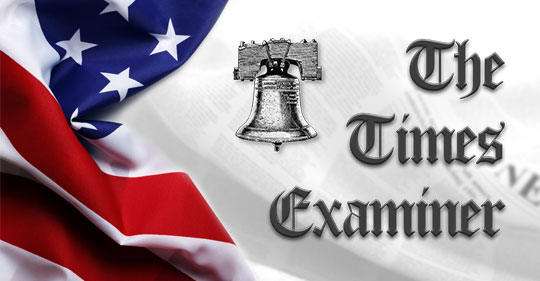- Trump IS fighting for the life of our Nation
- Spinning the Catholic Killer's Bio
- Can't Sit Still Pop a Pill (Part I)
- Avenging Charlie Kirk: The Conservative Redemption of Liberal Academia
- Top 20 Nations Ranked by 2025 GDP (PPP)
- Tennessee and the Return to Common Sense: Historical Education is in Fact Safety
- The American Spectator
- Congress Takes a Holiday from Oversight
- Leibniz and Calhoun: The Christian March of Progress and Postmillennial Truth
- A Seat at the Table, Not Just a Chair in the Room
- Mainstream Media Lies about Project Ukraine
- National Debt to GDP Ratios Survey
- Venezuela Briefing 9-15-2025
- Now We Must Ask: ‘QUO VADIS” America?
- Ukraine War Update September 22, 2025
Project Ukraine Update September 2, 2024
- Details
- By Mike Scruggs
- Category: Mike Scruggs' Column
Kursk, Donbass Resources, F-16 Losses, Overview

Kursk is a city of 440,000 in the Kursk Oblast (state) of southwestern Russia, bordering northeastern Ukraine. The city of Kursk sits mostly on the eastern side of the Don River. The population of Kursk Oblast is only about 1.1 million. Before World War II it was almost 3.0 million. However, it is the site of one of the richest iron ore deposits in the world and is also wealthy in rare minerals. It was once heavily forested, but now has some of the richest farmland in the world. About 96 percent of the population is Russian and about 69 percent of the population belong to the Russian Orthodox Church. The Kursk Nuclear Power Plant (NPP) is one of the three largest in Russia, which is situated about 24 miles west of the city. Kursk is about 316 miles or 7 hours south of Moscow.
False Prophets and Deceived Shepherds
- Details
- By Mike Scruggs
- Category: Mike Scruggs' Column
Compromising Scripture to Advance Secular-Humanist Agendas

In the Sermon on the Mount, Matthew 7:15, Jesus warns:
“Beware of false prophets, who come to you in sheep's clothing but inwardly are ravenous wolves.”
In verses 16-20, Jesus continues to warn us and show us how we will recognize them.
“You will recognize them by their fruits. Are grapes gathered from thornbushes, or figs from thistles? So, every healthy tree bears good fruit, but the diseased tree bears bad fruit. A healthy tree cannot bear bad fruit, nor can a diseased tree bear good fruit. Every tree that does not bear good fruit is cut down and thrown into the fire. Thus you will recognize them by their fruits.
Remembering Extraordinary Courage
- Details
- By Mike Scruggs
- Category: Mike Scruggs' Column
The Secret War in Laos February 6, 1967

On February 5, 1967, a USAF Forward Air Controller flying a single engine Cessna O-1F Birddog spotter aircraft, call sign Nail 65, was hit by antiaircraft fire. Nail 65 was coordinating an attack by two Navy A-4 Skyhawks on an underwater bridge and North Vietnamese trucks parked under camouflage in the mountainous Mu Gia Pass on the Ho Chi Minh Trail. Nail 65 pilot was Captain Lucius “Lamar” Heiskell from an O-1 detachment of the 23rd Tactical Air Support Squadron positioned with the Air Commando Wing at Nakhon Phanom Royal Thai Air Base (RTAB). Realizing his O-1 was too badly damaged to escape the mountainous area of western North Vietnam, Heiskell managed to climb to 1,000 feet above the terrain and then bailed out. This was reported immediately by an accompanying Nail O-1 wingman to Crown, the C-130 communications center. Successful bail out from an O-1 was actually rare because their combat missions were usually close to the ground. Heiskell’s bail out was successful, but he had to spend the night on the ground, evading North Vietnamese Army (NVA) searchers, but was able to contact Crown and other USAF aircraft sparingly when he believed it was safe. First hiding his parachute, he hid himself in a “crack” and was almost walked over by searchers several times.
Air Commando Hunters on the Ho Chi Minh Trail
- Details
- By Mike Scruggs
- Category: Mike Scruggs' Column
Snapshots from the Secret War in Laos

The Secret War in Laos is frequently dated as 1964 through 1975 and was a part of the Vietnam War. Its objective was to stop the supply of North Vietnamese weapons, munitions, fuel, and enemy manpower into South Vietnam and Cambodia. The U.S. intervened in this huge web of North Vietnamese logistical trails, named for North Vietnamese leader Ho Chi Minh, largely by aerial bombing and strafing. I can best explain the Air Commando efforts from 1966 to 1969 by snapshots of my own experience as an A-26K navigator of the 606th Air Commando Squadron in 1967.
Remembering LBJ’s Vietnam War Operation Rolling Thunder
- Details
- By Mike Scruggs
- Category: Mike Scruggs' Column
The Costly Failure of Gradualist “Powderpuff” Air Warfare

American involvement in Vietnam remained largely advisory until late 1964. By June of that year, President Lyndon Johnson realized that North Vietnam was infiltrating regular army units into South Vietnam with five times the fire power of the South Vietnamese Army units.45 Following attacks by North Vietnamese patrol boats on the destroyers Maddox and Turner Joy in the Tonkin Gulf in August 1964, Johnson allowed U.S. Navy aircraft to retaliate against North Vietnamese patrol boat installations.
 Mike Scruggs is the author of two books: The Un-Civil War: Shattering the Historical Myths; and Lessons from the Vietnam War: Truths the Media Never Told You, and over 600 articles on military history, national security, intelligent design, genealogical genetics, immigration, current political affairs, Islam, and the Middle East.
Mike Scruggs is the author of two books: The Un-Civil War: Shattering the Historical Myths; and Lessons from the Vietnam War: Truths the Media Never Told You, and over 600 articles on military history, national security, intelligent design, genealogical genetics, immigration, current political affairs, Islam, and the Middle East.
He holds a BS degree from the University of Georgia and an MBA from Stanford University. A former USAF intelligence officer and Air Commando, he is a decorated combat veteran of the Vietnam War, and holds the Distinguished Flying Cross, Purple Heart, and Air Medal. He is a retired First Vice President for a major national financial services firm and former Chairman of the Board of a classical Christian school.
Click the website below to order books. http://www.universalmediainc.org/books.htm.












